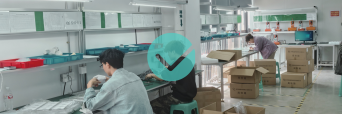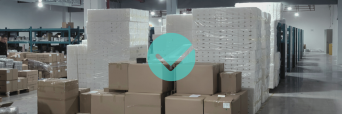Step-by-Step Quality Control Process: From Order to Shipment

Quality control is a crucial element of importing from China, helping avoid issues with defective products, delays, and returns. To ensure the goods meet your specifications, the inspection process consists of several essential stages—from placing the order to final shipment. What does this process look like in detail? Let’s break it down step by step.
Step 1: Defining Quality Requirements
-
Product Specification – Before production begins, the client should clearly define expectations regarding materials, workmanship, functionality, and quality standards.
-
Setting AQL Level (Acceptable Quality Limit) – This determines the permissible number of defective units in a production batch.
-
Choosing the Type of Inspection – Depending on the needs, different types of inspections can be used: Initial Production Check (IPC), During Production Check (DUPRO), or Pre-Shipment Inspection (PSI).
Step 2: Raw Materials and Components Inspection (IPC)
Purpose: To verify the quality of raw materials and components before production starts.
Scope:
-
Verifying that materials delivered to the factory match the client's specifications.
-
Checking certifications and compliance with standards (e.g., REACH, RoHS).
-
Identifying potential risks that could impact the final product.
Benefit: Prevents issues early on rather than correcting costly mistakes after production ends.
Step 3: During Production Inspection (DUPRO)
Purpose: To monitor product quality at various stages of production—especially important for large orders or long production cycles.
Scope:
-
Random sampling and testing of units.
-
Verifying dimensions, colors, and functionality.
-
Checking production lines and working conditions.
Benefit: Helps identify issues early in the process and avoid mass production of defective items.
Step 4: Pre-Shipment Inspection (PSI)
Purpose: Final inspection of finished goods before shipment to the client.
Scope:
-
Random sampling based on the agreed AQL level.
-
Checking functionality, durability, and compliance with the order.
-
Inspecting packaging and labeling to ensure they meet transport and customs requirements.
Benefit: Final assurance that the client receives exactly what was ordered—without needing to return defective goods.
Step 5: Laboratory Testing
Purpose: To verify that products comply with applicable safety and quality standards.
Scope:
-
Chemical testing (e.g., heavy metals content, BPA).
-
Mechanical testing (e.g., durability, temperature resistance).
-
Certification for compliance with EU, US, or other market regulations.
Benefit: Ensures the product is safe and meets legal requirements in the destination market.
Step 6: Container Loading Check (CLC)
Purpose: To oversee the loading process and prevent damage during transit.
Scope:
-
Checking quantity and conformity of goods before loading.
-
Inspecting packaging and how goods are arranged in the container.
-
Ensuring protection against moisture, shocks, and other transport-related risks.
Benefit: Confidence that goods will arrive in perfect condition.
Summary
Effective quality control is a multi-step process that begins before production and continues until the goods are loaded for shipment. Working with professional inspectors helps avoid costly mistakes and ensures that products meet all client expectations.
Want to learn more about quality control in China?
Contact us: [email protected]
This may interest you...

Is It Worth Working with Small Factories in China?

How to Verify the Reliability of a Supplier in China?

What Are the Costs of Quality Control in China and What Influences Them?
